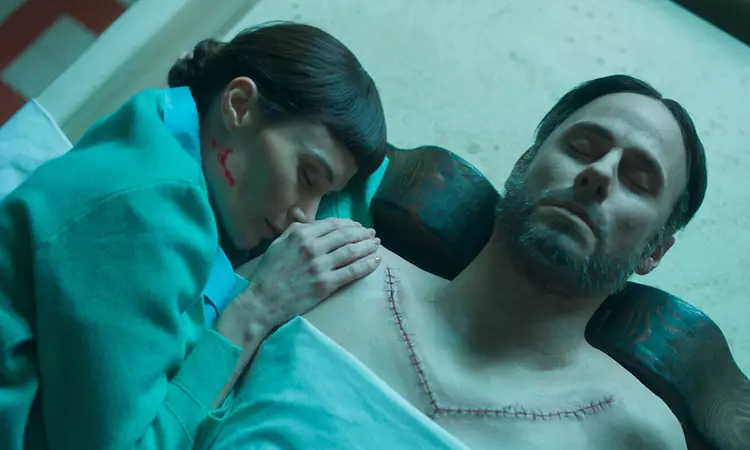“Broken Bird,” directed by Joanne Mitchell, invites audiences on a haunting exploration of grief through the eyes of its eccentric protagonist, Sybil Chamberlain, portrayed brilliantly by Rebecca Calder. The film opens strikingly with the morbid image of a dead bird, which becomes a potent symbol for the themes of death and decay that permeate the narrative. Through Sybil’s peculiar hobbies of taxidermy and mortuary science, the film presents a profound commentary on the way individuals deal with unresolved trauma and the search for connection amid despair.
At the heart of “Broken Bird” lies the character of Sybil, whose unsettling hobbies reflect her grappling with a traumatic past. As a child, she survived a horrific car accident that left her marooned for days with the bodies of her deceased family. This formative experience has shaped her present, where she interacts more comfortably with the dead than the living. The peculiar combination of her professional life, as a mortician, and her passion for amateur taxidermy paints her as a tragic figure caught in a web of nostalgia and madness.
Sybil’s characterization evokes a blend of sympathy and horror, as she demonstrates the coping mechanisms of a woman who has been profoundly affected by loss. Her formal attire from bygone decades serves as a chilling reminder of her inability to move forward, both physically and emotionally. The film adeptly crafts her narrative, allowing audiences to understand how deeply entrenched her grief is, while simultaneously portraying her yearning for connection—exemplified in her infatuation with Mark (Jay Taylor), a man who remains just out of reach due to his existing relationship.
While Sybil’s journey is central to the plot, “Broken Bird” expands its exploration of grief through the lives of other characters. Emma, a divorced police detective played by Sacharissa Claxton, represents another facet of mourning. Having lost her son, Jake, she drowns her sorrows in alcohol and fragmented visions, illustrating the depths of her despair. This layering of narratives emphasizes that grief manifests in various forms, often leading individuals into the depths of delusion as they cling to memories of their lost loved ones.
Similarly, Mr. Thomas, portrayed by James Fleet, serves as a reminder that loss does not solely belong to the young. He struggles to let go of his late wife, a sentiment that connects him to Sybil’s emotional state. The intertwining of their stories highlights the experiences of loss across different generations, emphasizing that no one is untouched by death’s pervasive nature.
Psychodrama: The Unfolding of Grief
“Broken Bird” shifts from being a narrative focused solely on individual psyches to a compelling psychodrama as the characters’ stories overlap. The film skillfully navigates the complexities of each character’s grief, culminating in a moment where their paths converge. Mitchell’s approach eschews conventional thriller tropes, focusing instead on psychological depth and the emotional wreckage left behind by loss.
Through careful pacing, the viewer is led to anticipate the inevitable climax that unearths how interconnected the lives of these “broken birds” truly are. Mitchell and screenwriter Dominic Blunt weave a tapestry of emotional moments that allow for a broader understanding of loss’s impact on the human psyche. The film becomes an exploration of how each character’s journey is influenced by hidden traumas, revealing the fragile nature of human connections.
Ultimately, “Broken Bird” emerges as a poignant commentary on death, loss, and the search for meaning in a world overshadowed by grief. By juxtaposing Sybil’s morbid fascinations with the emotional battles of Emma and Mr. Thomas, the film transcends horror to touch on the complexities of human relationships. The tragic ending serves as a resonant conclusion, leaving audiences contemplating the delicate balance between love, loss, and the human condition’s inherent struggles. In achieving this, “Broken Bird” finds a unique place in contemporary cinema, artfully portraying the haunting echoes of mortality and the deep-seated need for connection amidst despair.


Leave a Reply